#clodius macer
Text
Obscure Imperial Era Romans (That Appeared on Coins) Part I
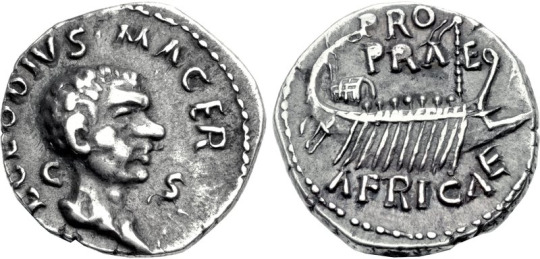
Coin of Clodius Macer, with Galley on reverse.
Clodius Macer, a high ranking military officer turned pirate, played a role in the beginnings of the civil war of 69 AD, being one of the men who first rebelled against Nero by raiding the north African coast, cutting off the food supply to the city of Rome, and generally being a pain in the ass.
It's reasonable to believe that Macer wanted to become emperor, but any plans he had were cut short when Galba had him killed. His coins are extremely rare, with only a few portrait denarii surviving the test of time.
he also looks goofy as hell
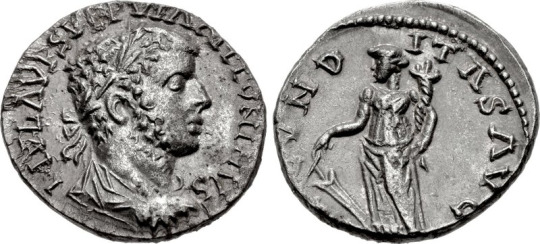
Coin of Uranius Anoninus, one of only three denarii known.
Uranius was active in the roman city of Emesa in Syria from 253-254 AD during Shapur's attacks on the eastern provinces. Imperial aid to most of the eastern cities was lacking due to the clusterfuck of the third century, so a local priest of the god Elagabal (the same god that Elagabalus is famous for worshipping) decided to step up and lead a militia comprised of other local Emesans. This militia succeeded in their goal of defending against Shapur.
The interesting is, this is one of the extremely ultra super rare occasions where someone who was put in a position of power during the third century clusterfuck didn't have strong imperial ambitions. It seems like Uranius only made coins to establish some sort of legitimacy within the area, and when the Persian threat was gone, Uranius most likely went back to being a priest.
Or he died, but we'll never know
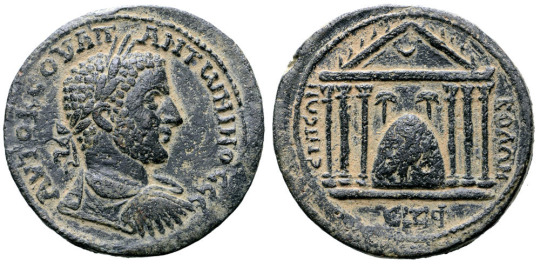
Uranius, with a temple for his favorite rock

Uranius throwing his rock a big parade
#ancient coins#ancient rome#roman history#roman usurpers#ancient history#ancient art#roman art#art#uranius antoninus#clodius macer#elagabalus's favorite rock 2: shapur boogaloo#denarius#aureus#history#archaeology#classics
3 notes
·
View notes
Text
Licinius Calvus, An Epigram on Pompey (FLP 210.18; Schol. Juv. 9.133)
Magnus, quem metuunt omnes, digito caput uno
scalpit; quid credas hunc sibi velle? virum.
Magnus, whom everyone fears, scratches his head
with one finger; what do you think that this man wants for himself? A man.
(http://www.theaterofpompey.com/rome/calvus.shtml)
8 notes
·
View notes
Photo
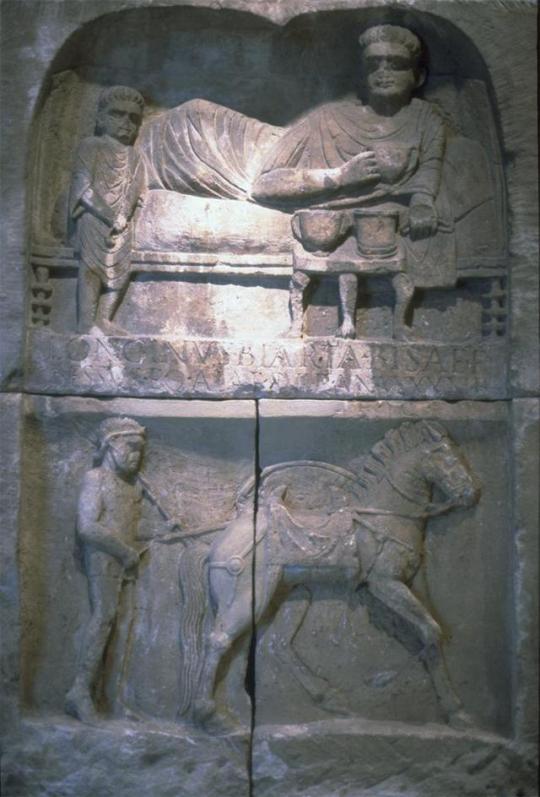
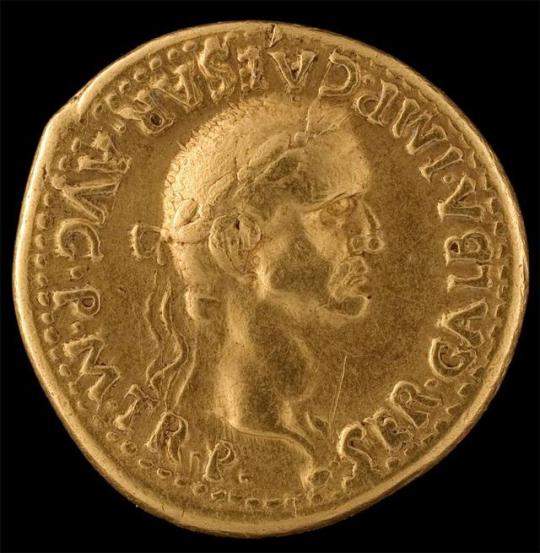




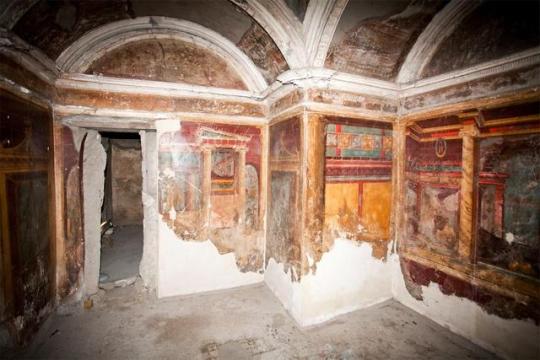

By Jean Marie Carey
Roman Emperor Galba (Servius Sulpicius Galba) was born 24 December 3 BCE in Rome. The son of an ancient patrician family was a favorite of the Empress Livia moved in the most elevated social circles of the Julio-Claudian era. He was governor of Aquitania, consul (33), governor of Upper Germany (40–2), and proconsul of Africa (44–5); his standing was recognized by the award of triumphal insignia and three priesthoods. Governor of Hispania Tarraconensis (north-east Spain) from 60, he was approached in 68 by Julius Vindex, who was instigating revolt against Nero. Galba had his troops proclaim him as representative of the senate and people of Rome, and enrolled a new legion (eventually VII Gemina) in addition to the one in his province.
Although Vindex was defeated, Nero's suicide and the support of Gaius Nymphidius Sabinus and the praetorians encouraged Galba to march on Rome. Once in power, Galba tried to recover Nero's extravagant largess, but the execution of several opponents including Lucius Clodius Macer who had raised revolt in Africa, and the brutal killing of soldiers recruited by Nero from the fleet cast a shadow. Galba’s avarice was notorious. He declined to pay the praetorians the donative promised by Nymphidius, saying that it was his practice to levy his troops not to buy them. He compounded this misjudgement by failing to control his own supporters. When on 1 January the legions of Upper Germany, who felt that they had been cheated of their reward for defeating Vindex, renounced their allegiance, Galba decided to adopt a successor, choosing Lucius Calpurnius Piso Frugi Licinianus. Otho, coveting this role for himself, fomented revolt among the praetorians, who murdered Galba on 15 January 69.
Reference: Campbell, John Brian. "Galba." In Who's Who in the Classical World. Oxford University Press, 2003. http://www.oxfordreference.com/view/10.1093/acref/9780192801074.001.0001/acref-9780192801074-e-236.
Grave monument for the cavalryman Longinus Biarta who served with a unit of auxiliary cavalry originally raised in Bulgarian Thrace by the Emperor Galba, 68. Römisch-Germanisches Museum, Köln, Nordrhein-Westfalen, Germany, Nr. S.25/474.
Gold Aureus of Galba, 68. Reverse: Livia, holding patera in right hand and leaning on scepter in left hand; DIVA AVGVSTA; obverse: Laureate head of Galba; SER GALBA IMP CAESAR AVG P M TR P. Wriston Art Galleries, Lawrence University, Appleton, Wisconsin. Ottilia Buerger Coin Collection, Nr. 91142.
Andrea Schiavone, Galba: The Twelve Caesars. The Illustrated Bartsch. Vol. 32, Italian Artists of the Sixteenth Century: School of Fontainebleau
Galba, Emperor of Rome, Anonymous Italian Sculptor, late 17th Century. Foto Reali Archive.
Wall Paintings, Villa of Poppaea, owned by Nero, c. First Century. Oplontis, Italy. Shmuel Magal, Sites and Photos.
Further Reading: Erich S. Gruen. Cultural Identity in the Ancient Mediterranean. Los Angeles, CA.: Getty Research Institute, 2011.
Jiří Frel and Sandra Knudsen Morgan. Roman Portraits in the Getty Museum. Tulsa, Okla.: Philbrook Art Center, 1981.
#otd#art#italian#italian art#roman art#roman emperors#galba#otho#nero#first century#roman empire#julio-claudian#sculpture#aureus#gold coins#livia#the illustrated bartsch#portraits busts#andrea schiavone#grave monuments
114 notes
·
View notes